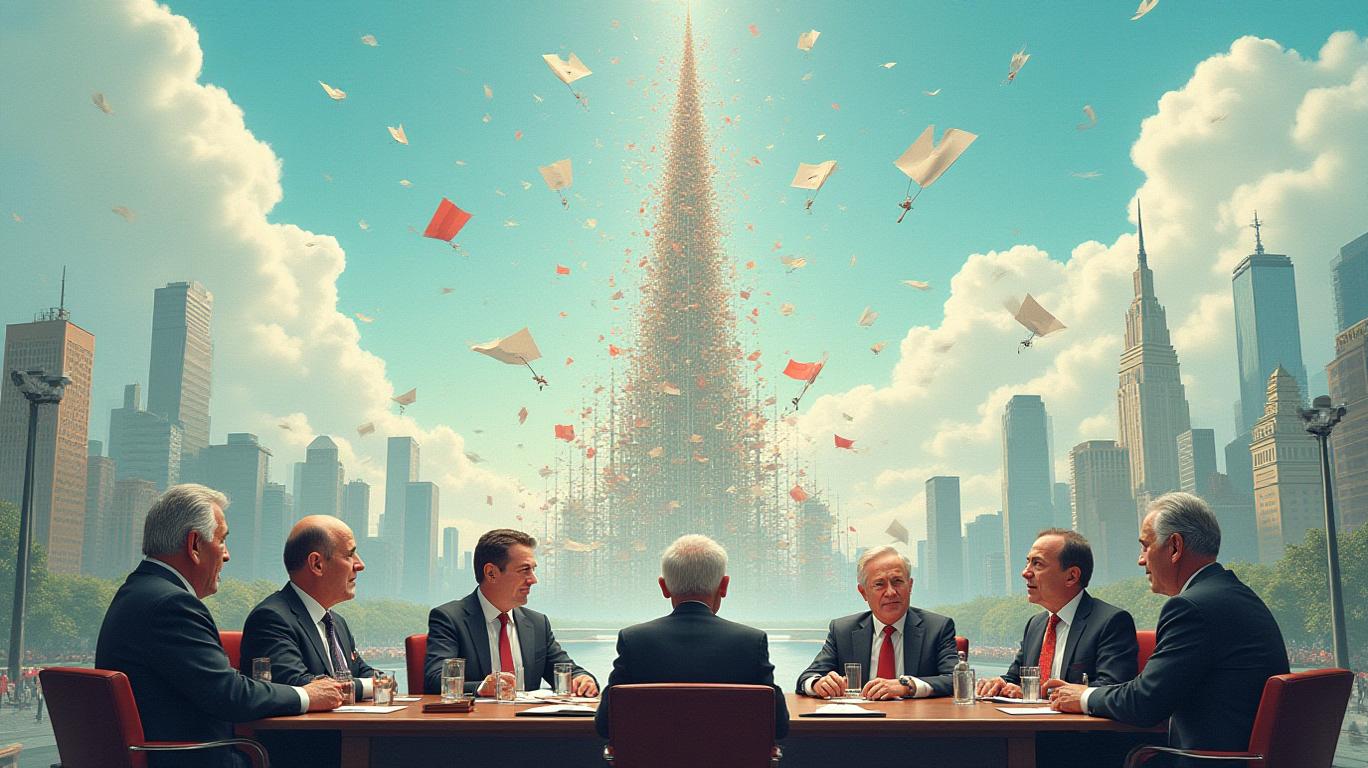Navigating the New Debt Cycle: How Dalio’s Insights Are Redefining Hedge Fund Strategies in 2025
The global economy is at a crossroads. Ray Dalio’s recent warnings about the late-stage dynamics of the “Overall Big Cycle” have sent shockwaves through financial markets, compelling hedge funds to rethink risk management frameworks. As debt levels soar, geopolitical tensions escalate, and climate crises intensify, the strategies of 2025 are no longer about chasing returns—they’re about survival.

The Debt Crisis: A Ticking Time Bomb
Dalio’s analysis centers on the unsustainable accumulation of debt, which has now reached a critical threshold. The U.S. national debt, now exceeding $36 trillion, is projected to hit 156% of GDP by 2055—a trajectory that Dalio calls “imminent and profoundly disruptive.”
Hedge funds are responding by adopting “debt-aware” portfolios. Managers are reducing exposure to long-duration bonds, which are vulnerable to devaluation through inflation or default. Instead, they’re favoring inflation-linked securities (e.g., TIPS), gold, and emerging-market hard-currency debt that benefits from dollar devaluation.
Geopolitical Fragmentation: The New Normal
Dalio’s framework highlights the collapse of post-WWII multilateralism. The U.S.-China trade war, Russia’s invasion of Ukraine, and the rise of unilateral policies signal a return to a multipolar world.
Hedge funds are pivoting to geopolitical alpha strategies, betting on winners in fragmented markets:
- Cybersecurity firms (e.g.,
- Critical minerals plays (e.g., lithium, rare earth metals) to exploit supply-chain nationalism.
- AI hardware manufacturers (e.g., NVIDIA, AMD) as tech becomes a strategic weapon.
Domestic Instability: The Populist Tempest
Dalio warns that democracies are fracturing under the weight of inequality and polarization. Populist leaders are exploiting crises to centralize power—a pattern seen in Turkey, Brazil, and even the U.S.
Hedge funds are hedging against this instability by:
- Shorting overleveraged banks in politically volatile markets.
- Buying put options on equity indices to protect against sudden sell-offs.
- Allocating to “hard assets” (real estate, infrastructure) insulated from policy uncertainty.
The Tech and Climate Wildcard
Dalio’s model incorporates acts of nature and technological disruption as accelerants. Climate disasters are straining budgets, while AI could reshape labor markets overnight.
Investors are positioning for these risks and opportunities:
- Renewable energy stocks (e.g., NextEra, Vestas) to benefit from climate spending.
- AI-enabled fintech platforms (e.g., Stripe, Plaid) to dominate post-crisis financial systems.
- Shorting legacy industries (oil, coal) vulnerable to rapid decarbonization mandates.
The Call to Action: Adapt or Perish
Dalio’s message is clear: we’re in Stage 5 of the debt cycle—overindebtedness, geopolitical chaos, and systemic fragility. The window to prepare is narrowing.
Take these steps now:
1. Rebalance portfolios to prioritize safety over yield.
2. Diversify across currencies to hedge against dollar devaluation.
3. Embrace geopolitical hedging through sector-specific bets.
4. Monitor debt dynamics—if yields on U.S. Treasuries spike above 6%, brace for a crisis.
The stakes have never been higher. In 2025, success hinges on heeding Dalio’s warning: the next decade will reward those who prepare for the end of the old order—and the birth of a new one.
Investors who ignore these signals risk becoming relics of a collapsing system. Act decisively, or risk being swept away.

Comments
No comments yet